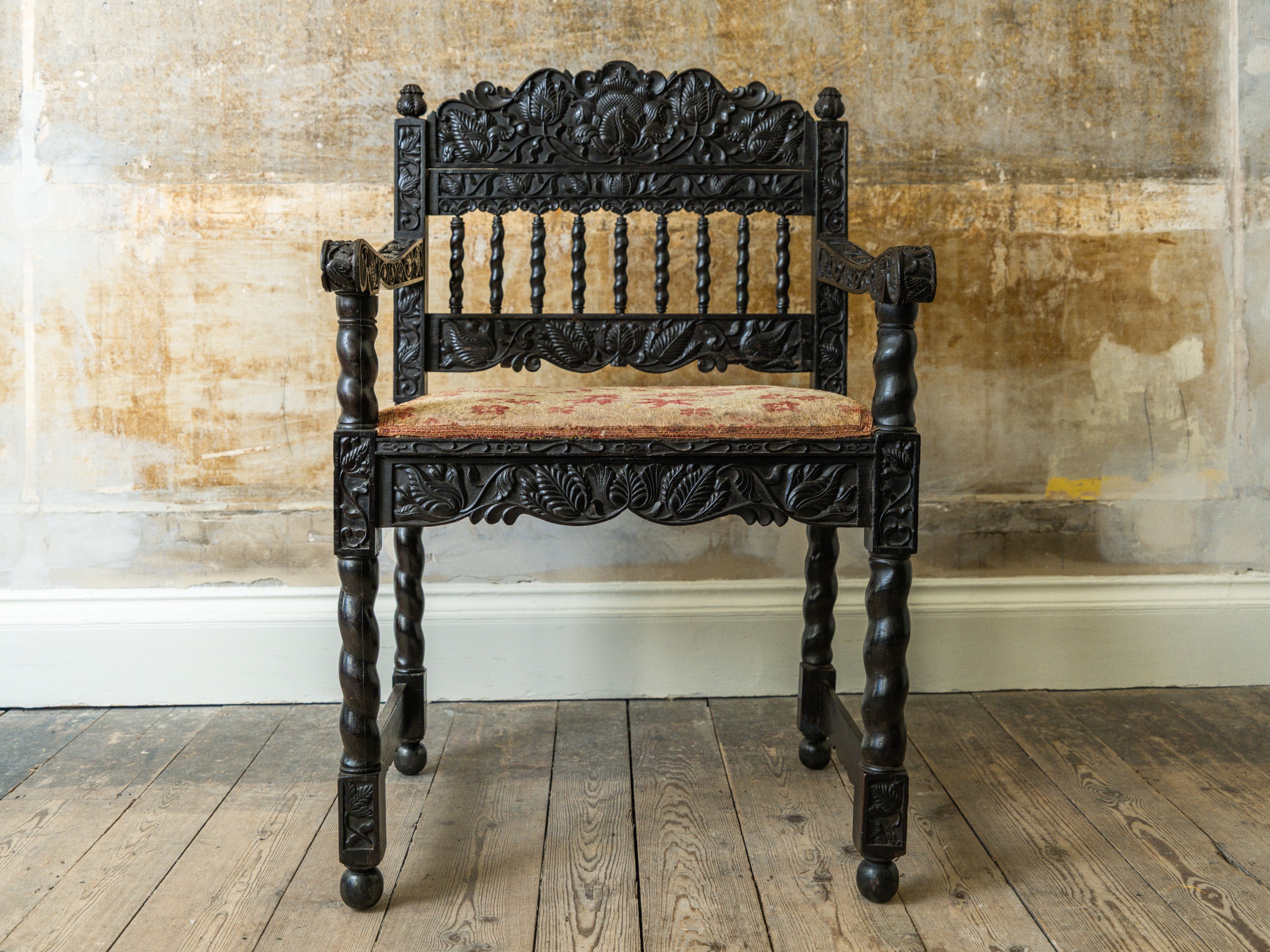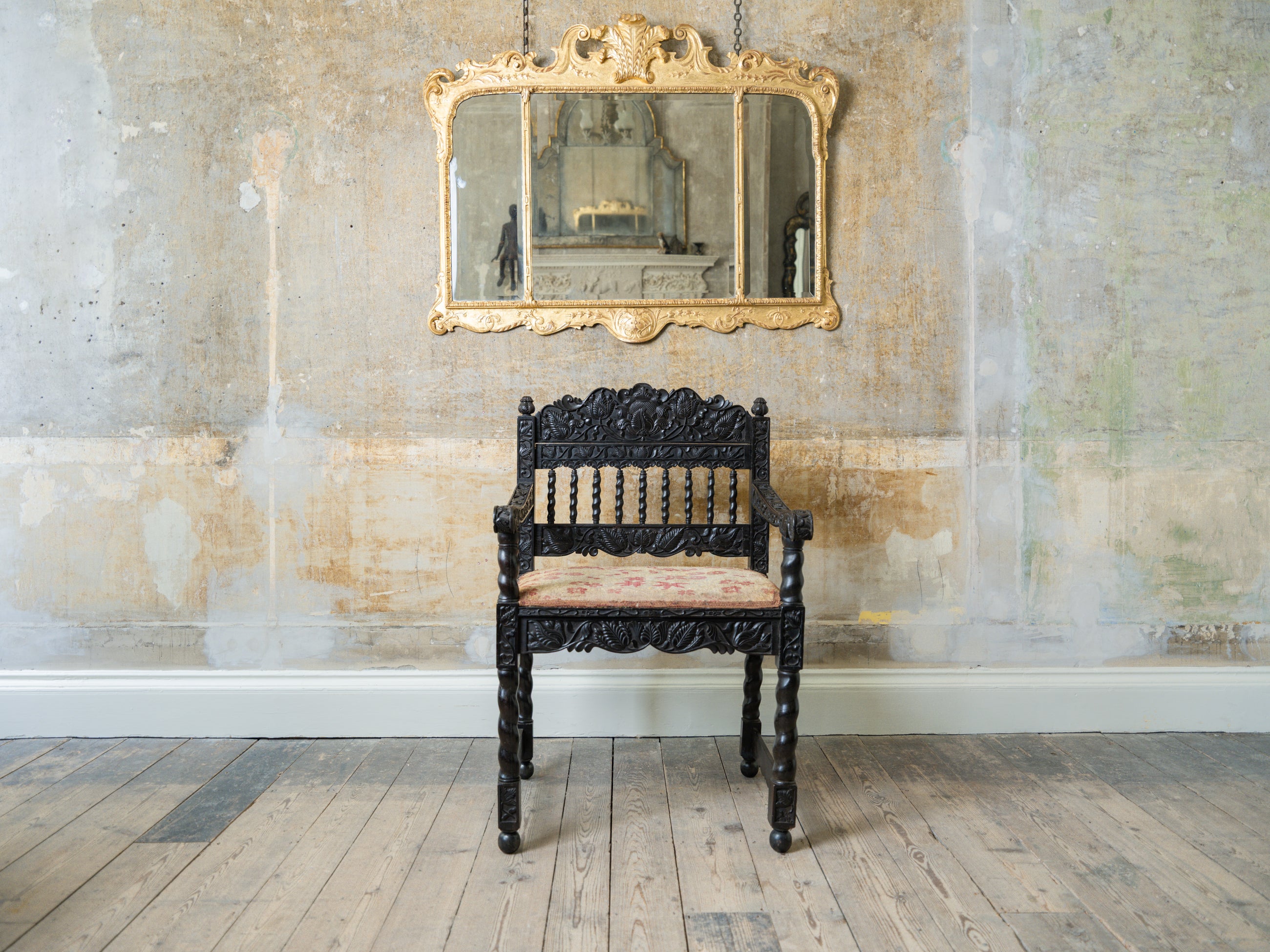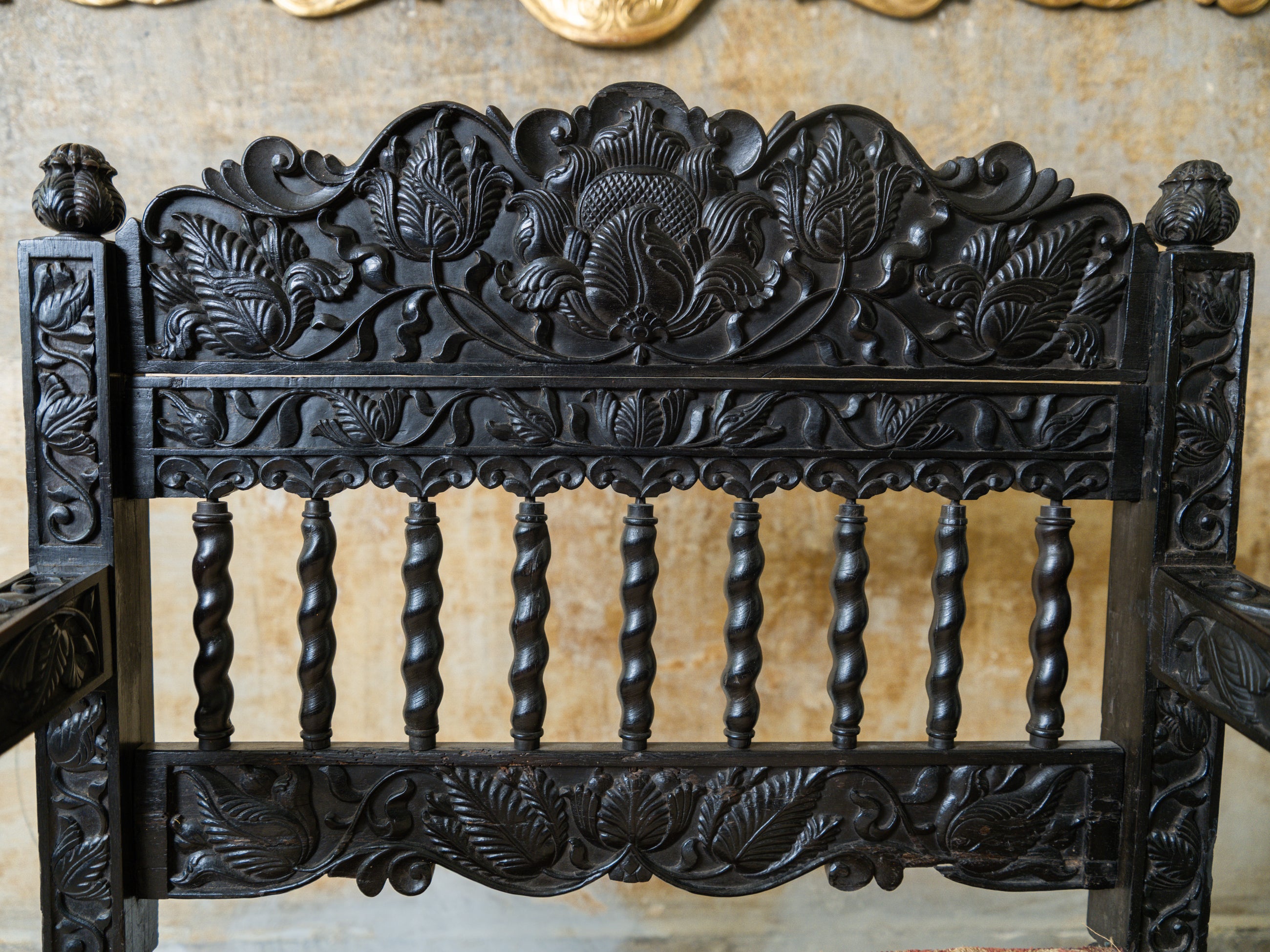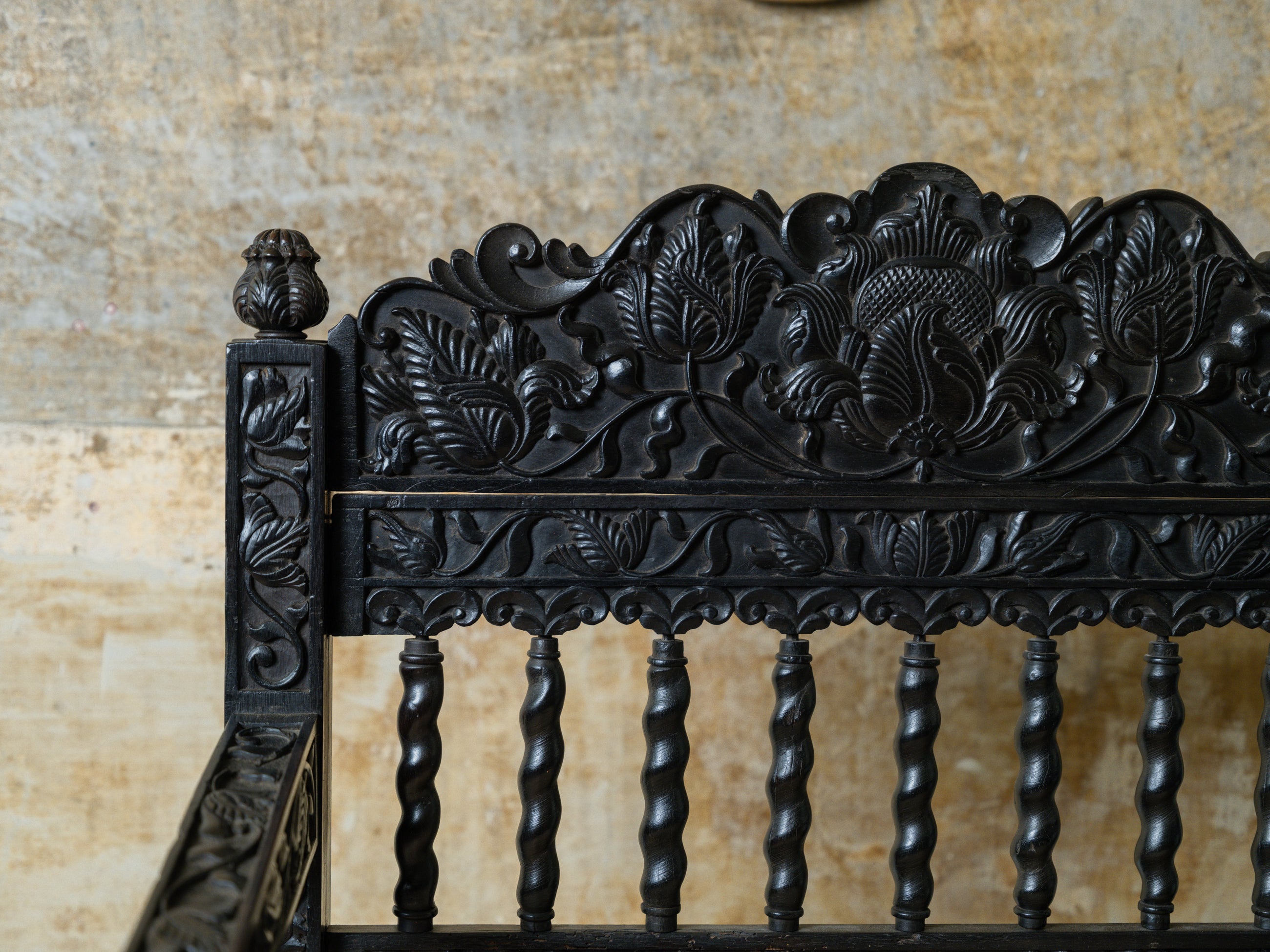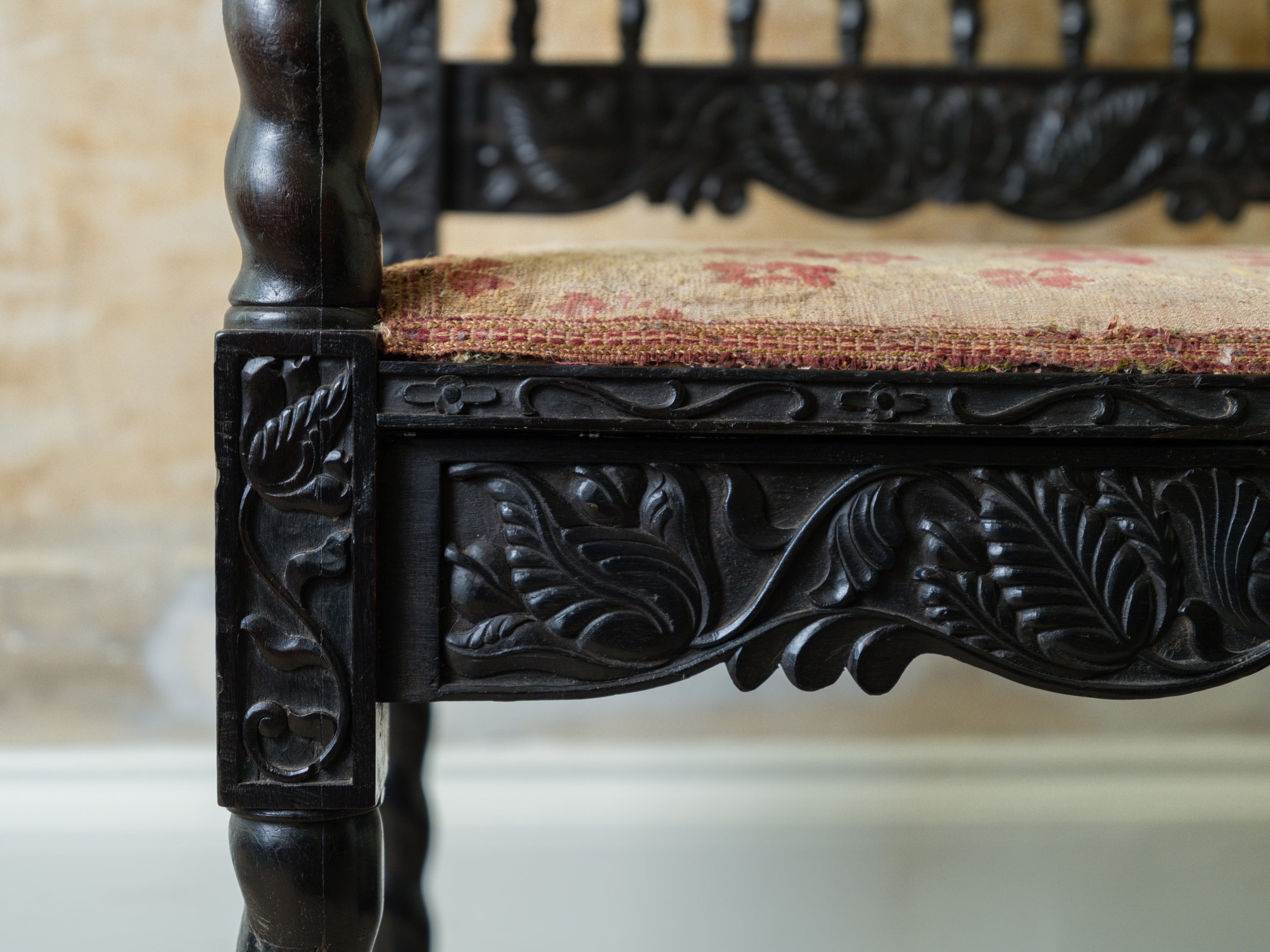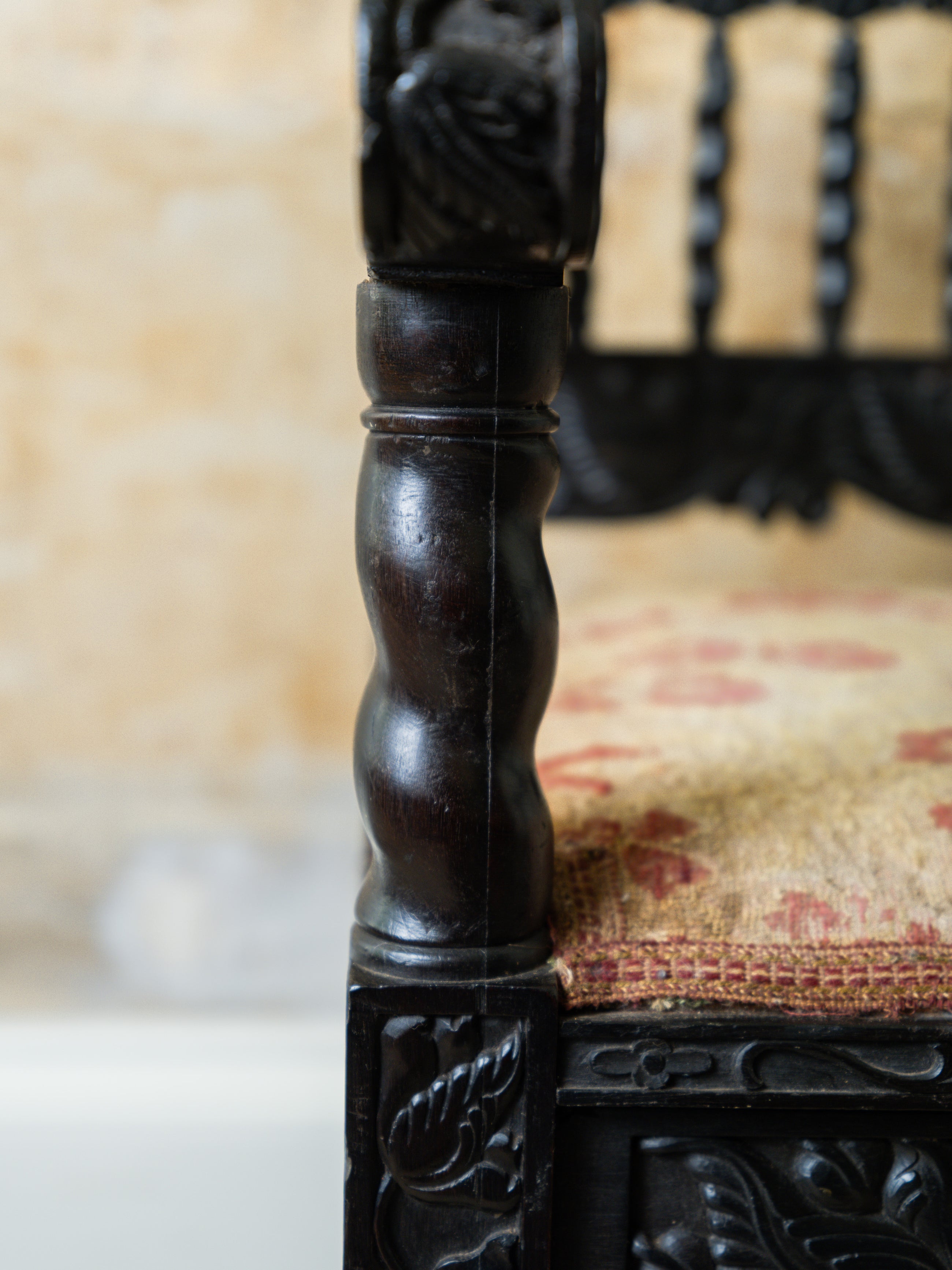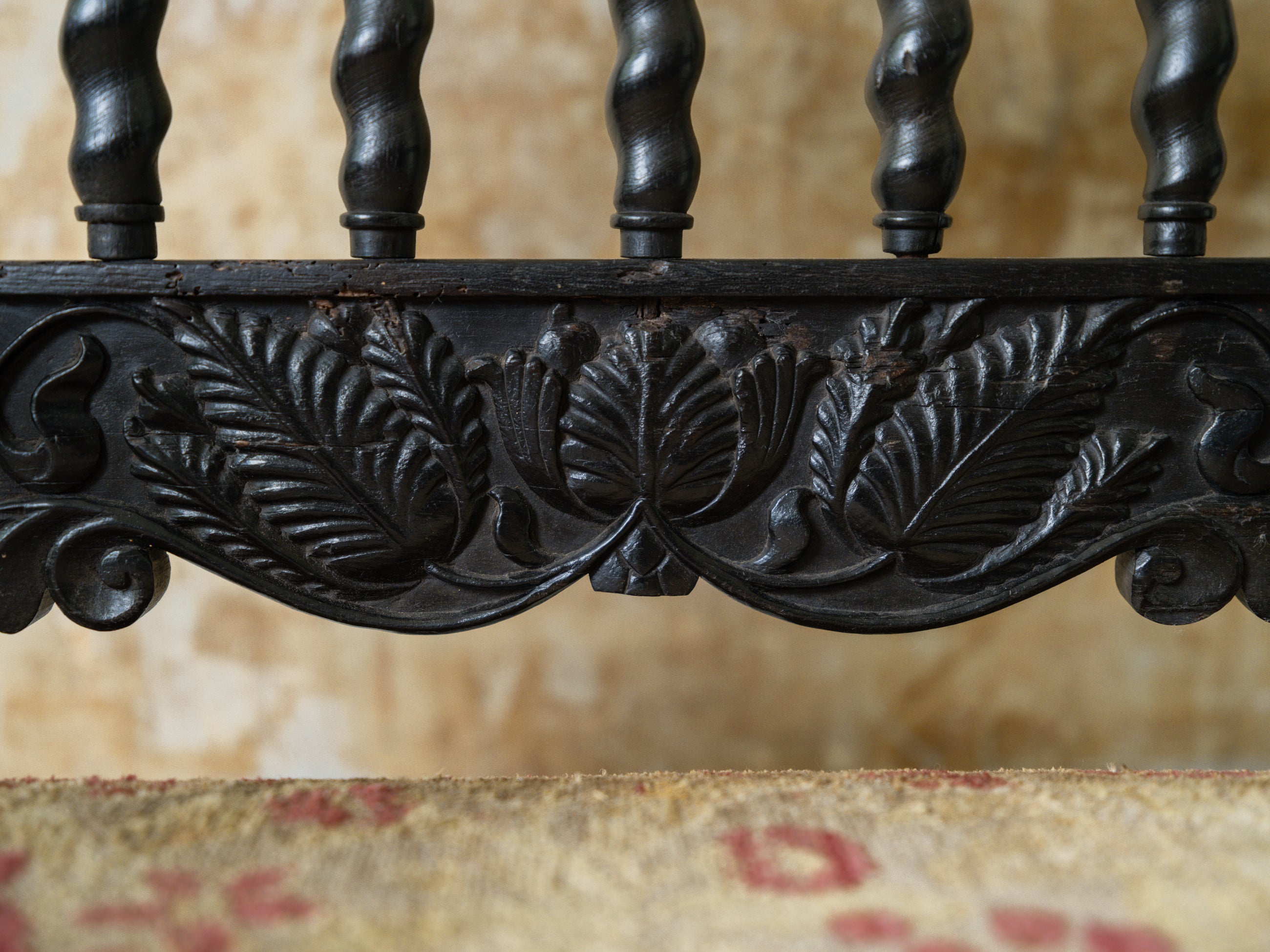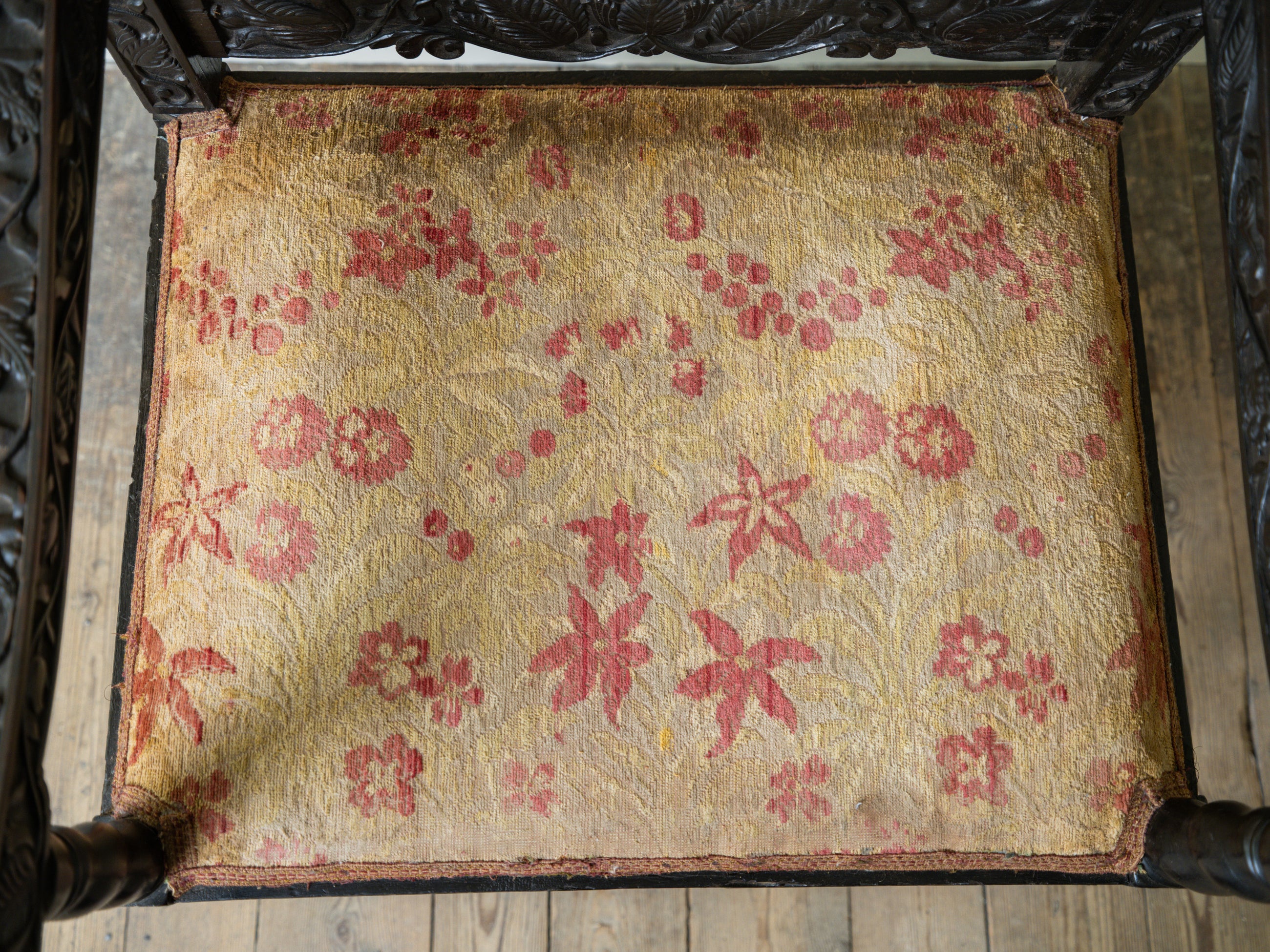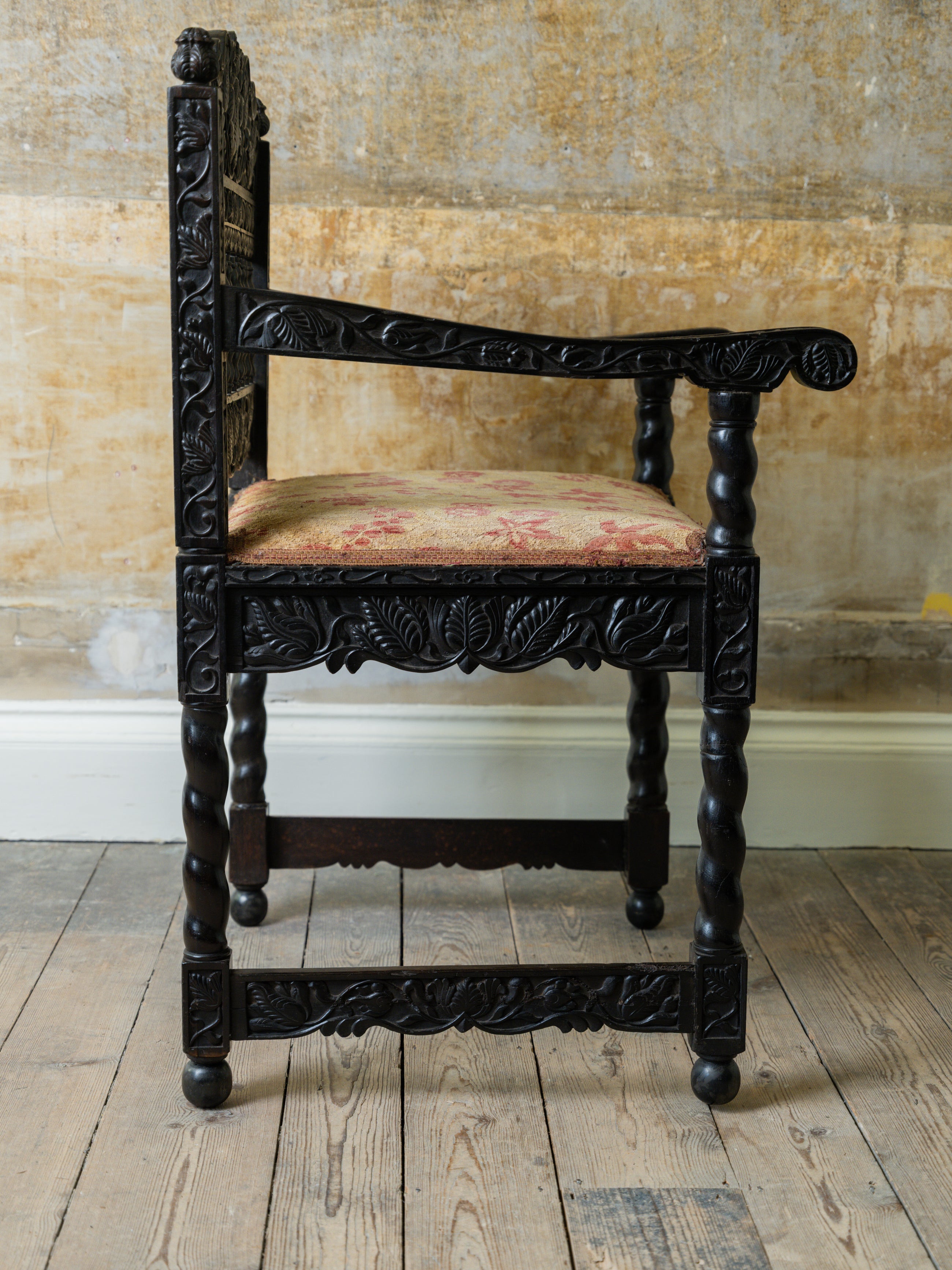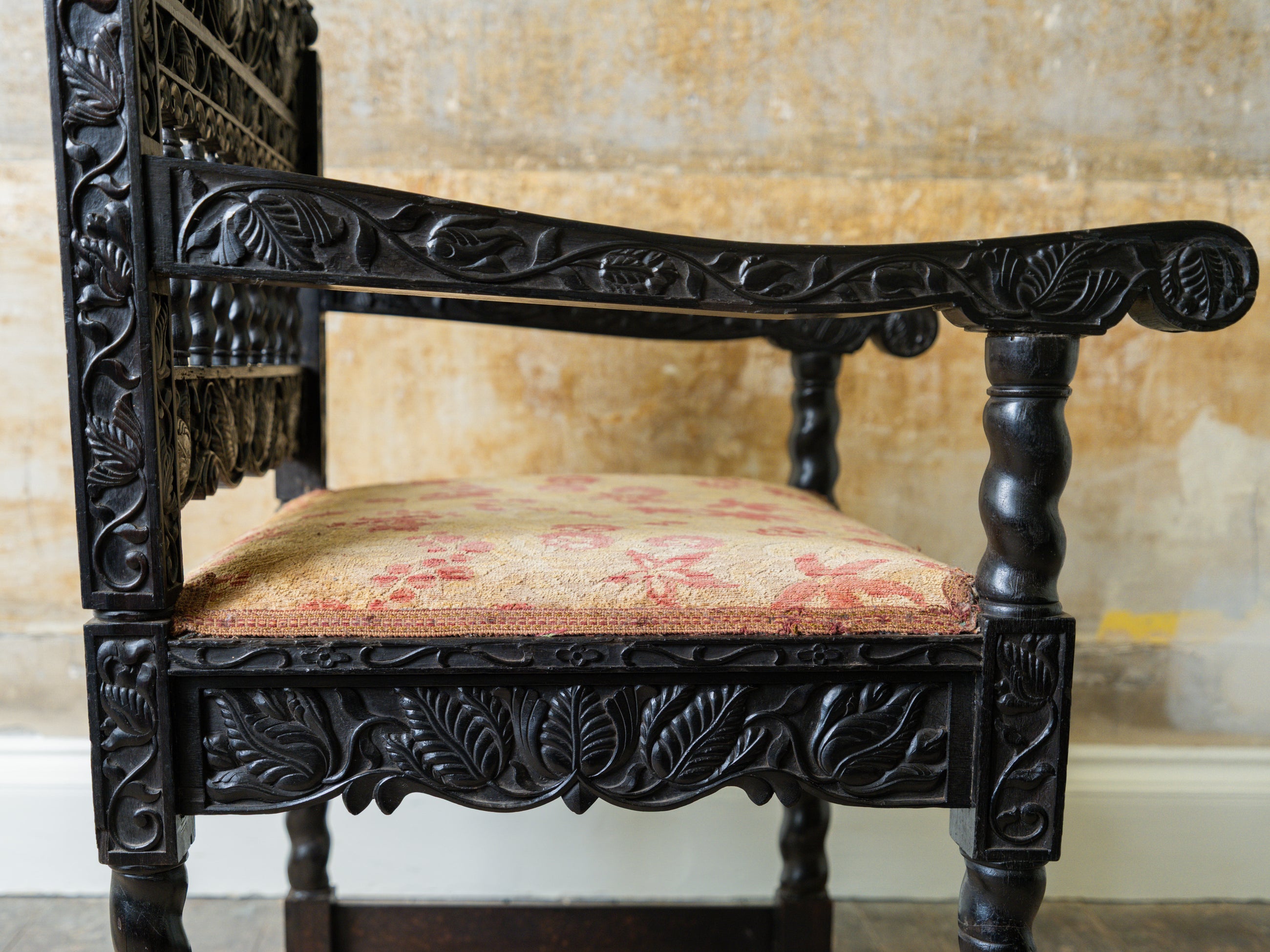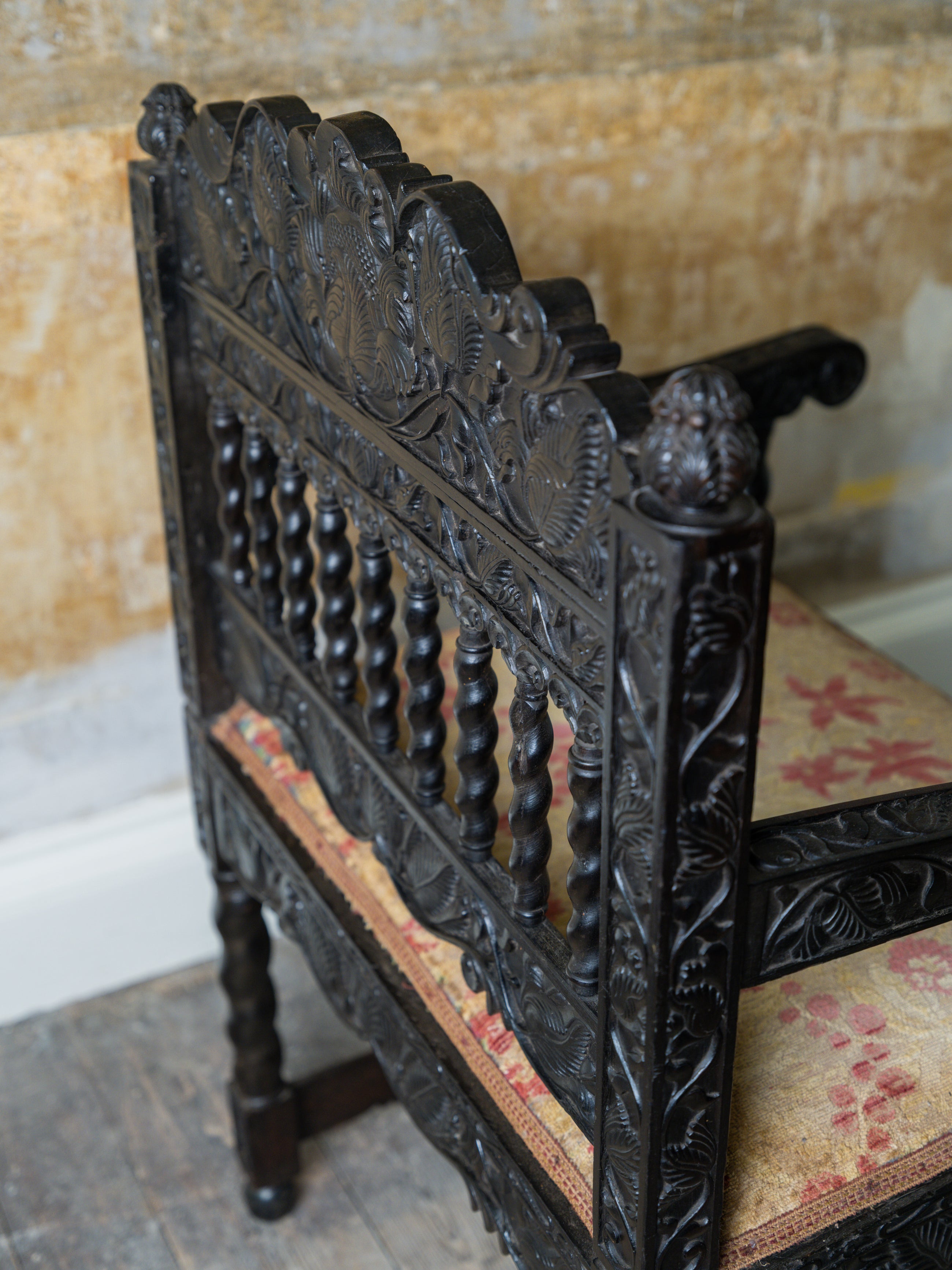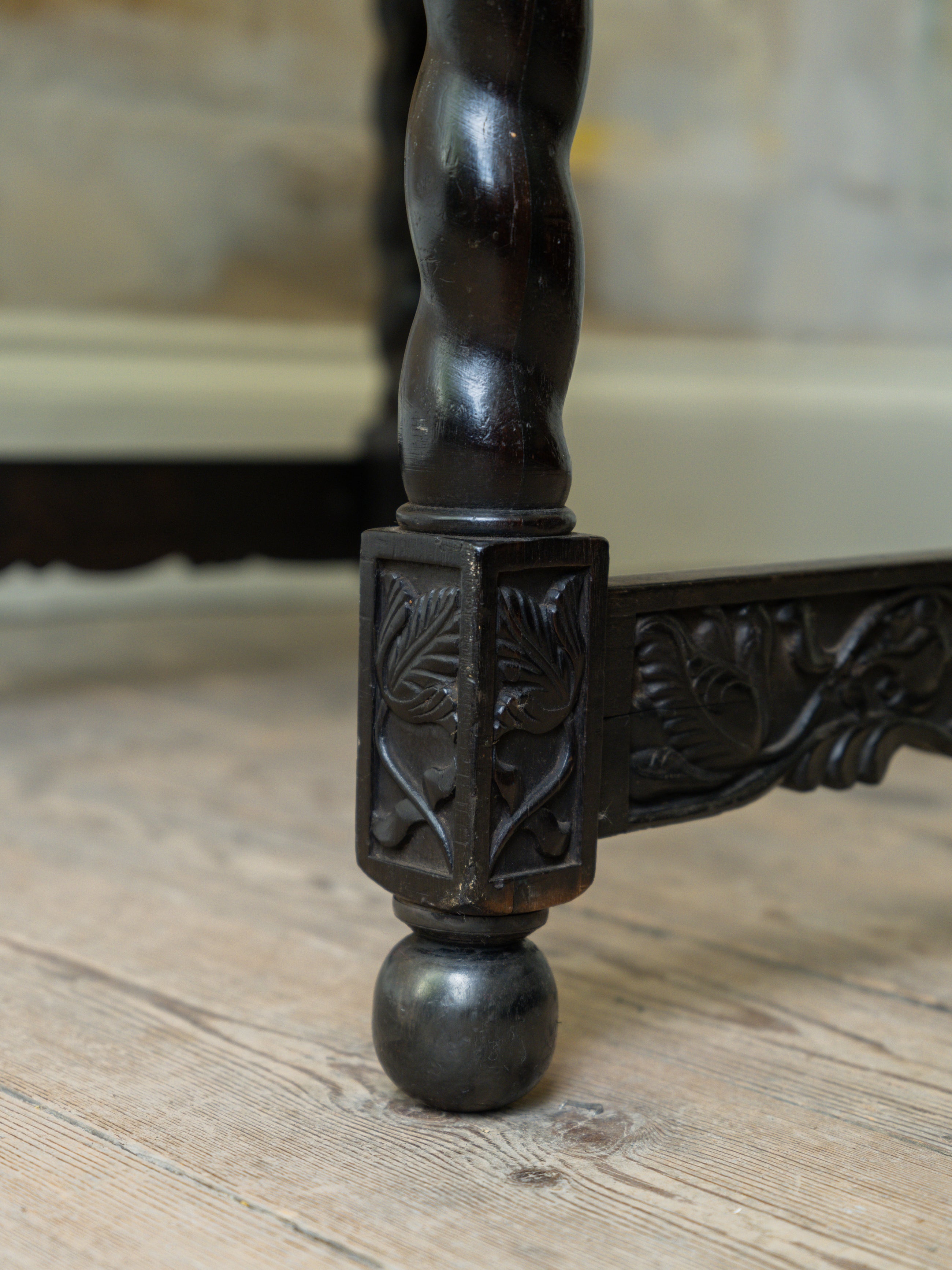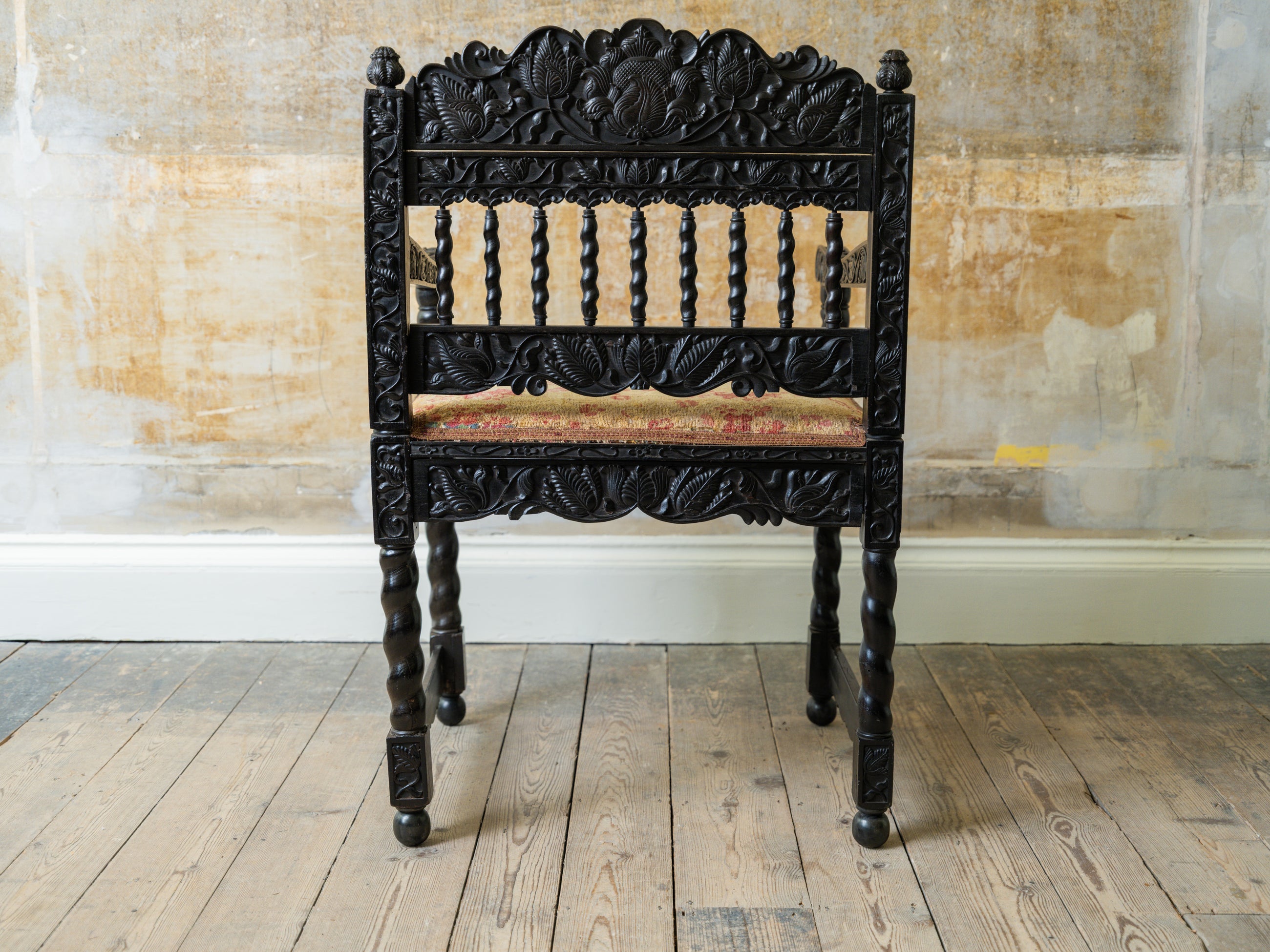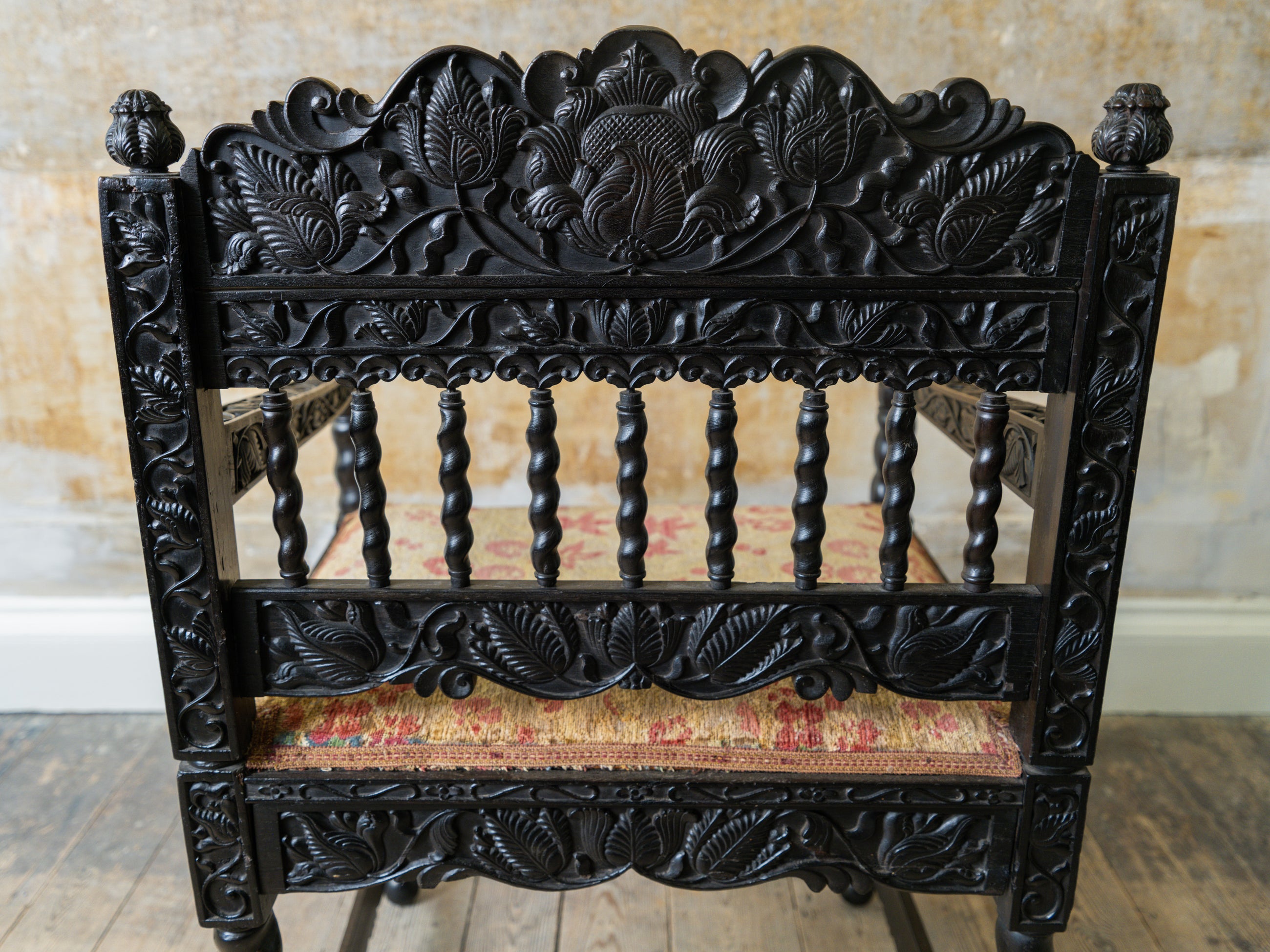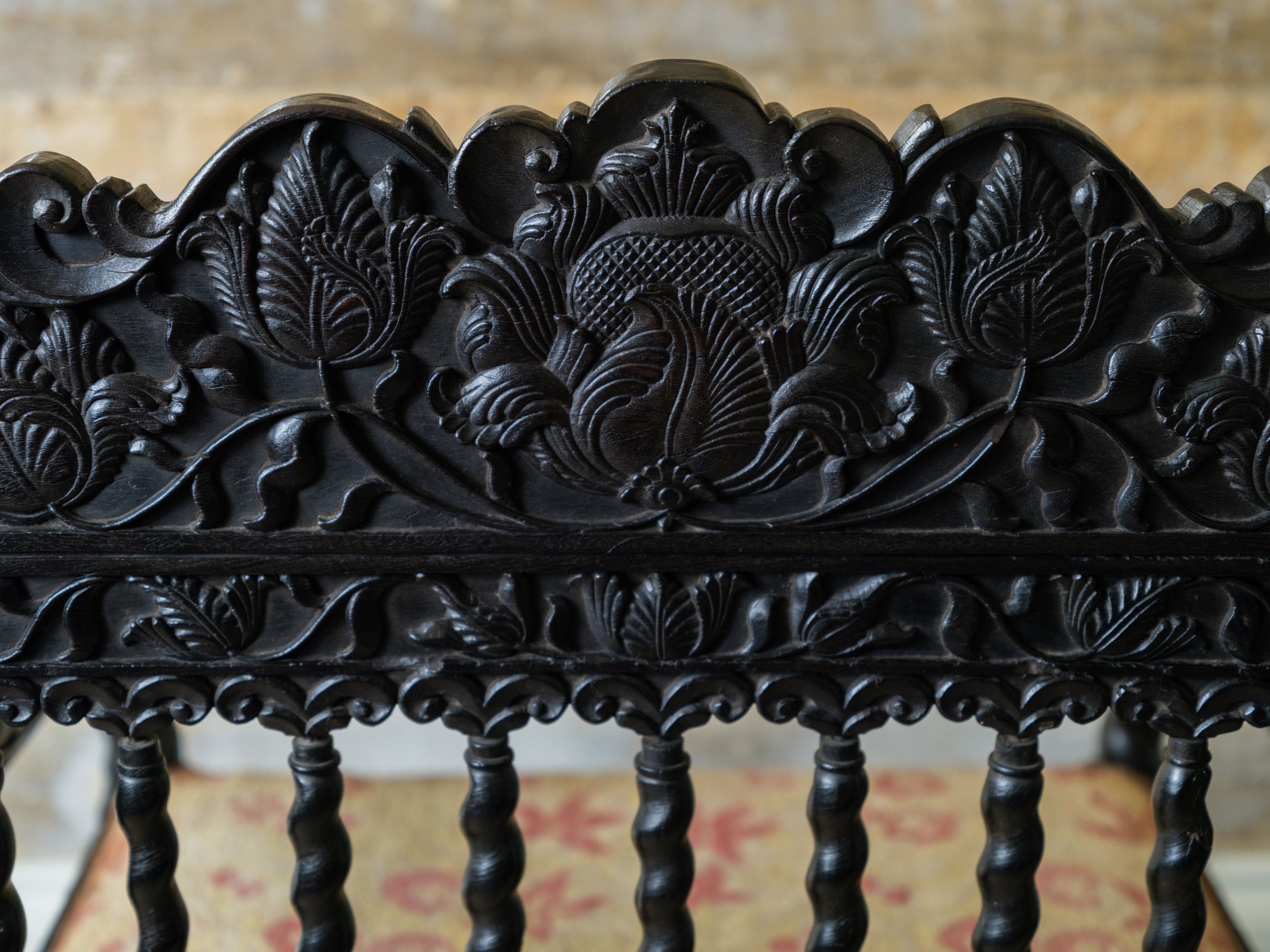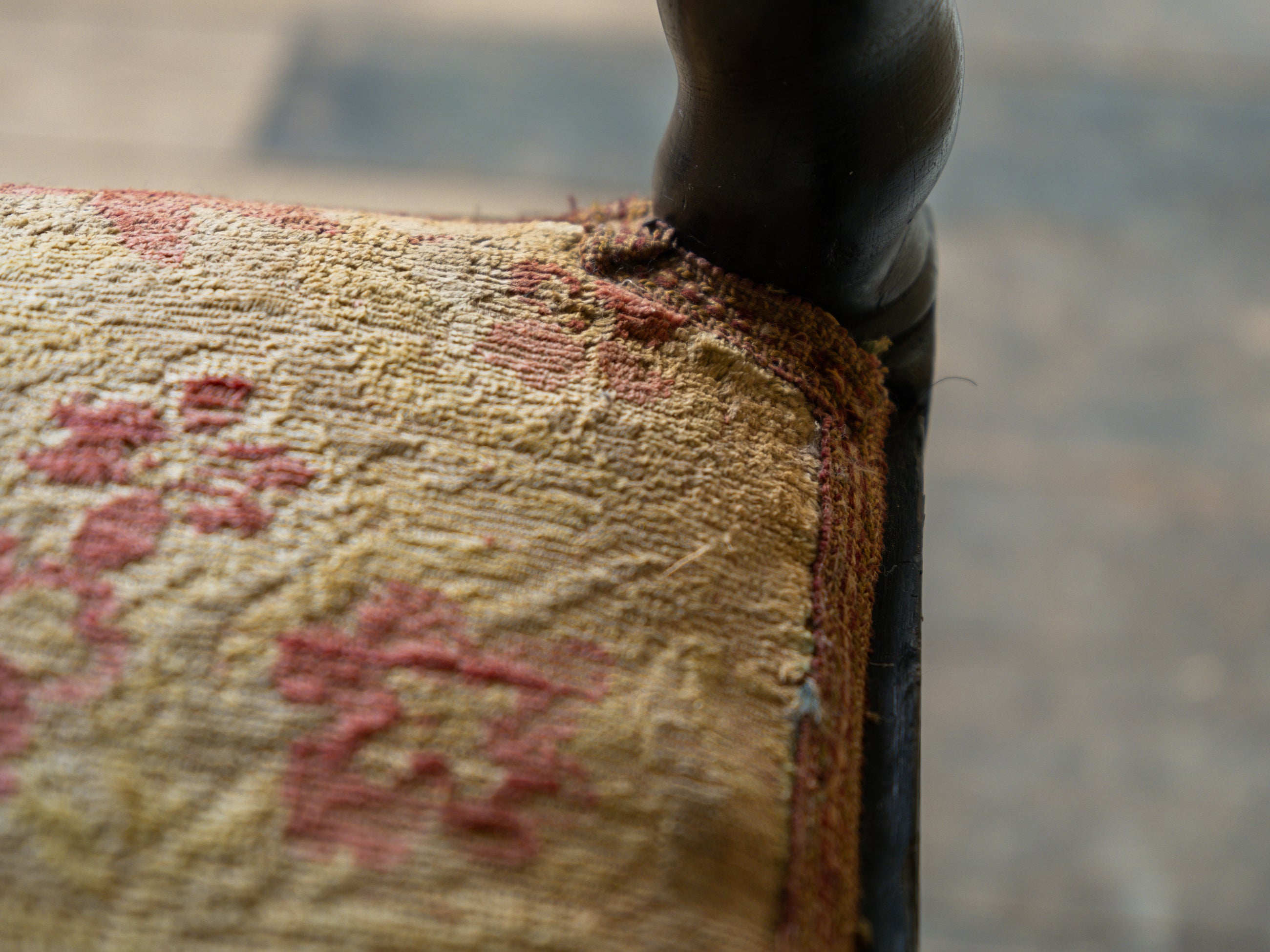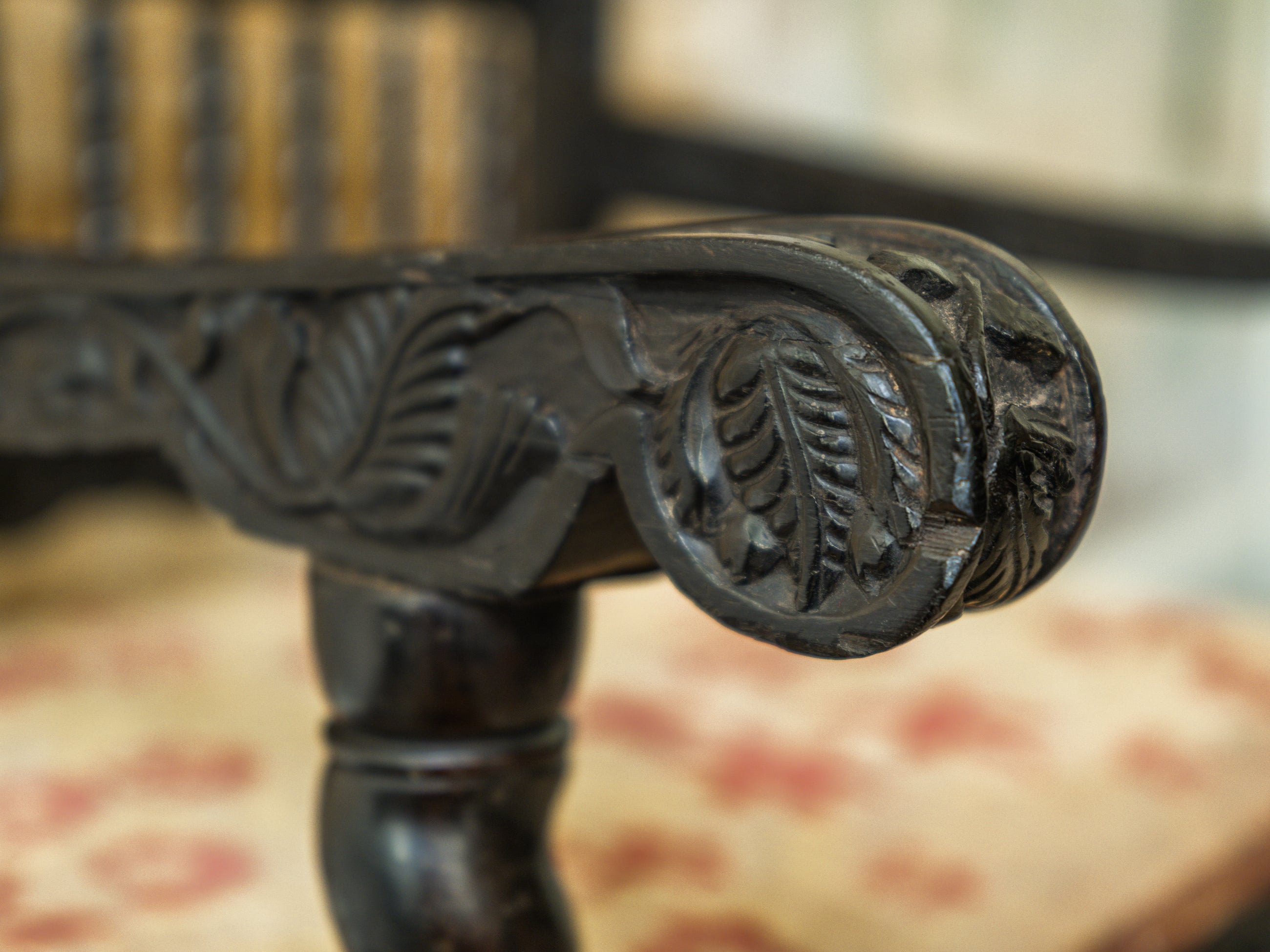A 17th Century Dutch Colonial Ebony Armchair
Carved Ebony with upholstered seat, Dutch East Indies (Sri Lanka or Java) 1680-1700.
Richly carved ebony chairs with twist-turned components were first made in the mid-17th century for Europeans living along India’s Coromandel Coast.
Furniture like this was very popular at Dutch settlements in India, Sri Lanka and the Indonesian archipelago, where it was reproduced both in ebony and other less expensive woods. This chair is carved with a type of flower that was fashionable among Europeans at home and in the Dutch East Indies.
H:92 W:61 D:58 CM (Seat Height 47 cm)
H:36.2 W:24 D:22.9 INCHES (Seat Height 18.5 inches).
Carved ebony chairs and tables of this type have been recorded in English collections from as early as the mid-18th century, and much of the confusion about their origin is due to the belief held in the second half of the 18th and most of the 19th century that they were surviving examples of early English furniture. This idea was supported by the rigid, rectilinear forms of the furniture, which looked antiquated to 18th century eyes; the use of twist-turning, which was believed to be typical of Elizabethan furniture; the bizarre, intricate carving, which often included mythic beasts and figures; and the colour, black, which was commonly associated with furniture of great antiquity.
For Horace Walpole, who appears to have been responsible for this attribution, notions about the age of such furniture based on its physical attributes were confirmed by the existence of examples in houses with Tudor associations.
By the early 19th century Walpole’s views that carved ebony furniture of this type was both English and of early date had become firmly established. In actual fact this type of ebony furniture was made in South India, Ceylon and the Dutch East Indies in the late 17th and 18th centuries.
Credit: V&A archive collection




















